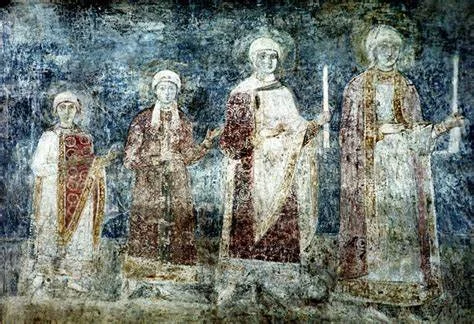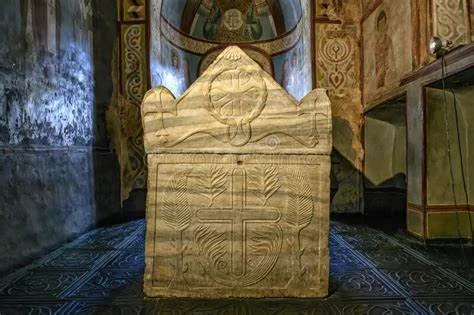St. Sophia's Cathedral is the oldest building in Kyiv and one of the top 100 UNESCO World Heritage Sites. This place has a sacred meaning for Ukraine. The edifice's walls bear witness to the most significant moments in the city's past – consecrations of princes and metropolitans, honorary receptions of distinguished guests, and reaching important political agreements. The very first library in Kyivan Rus was founded here, chronicles were kept, and books were translated. The square in front of the cathedral for many centuries has been the place of the popular assemblies.
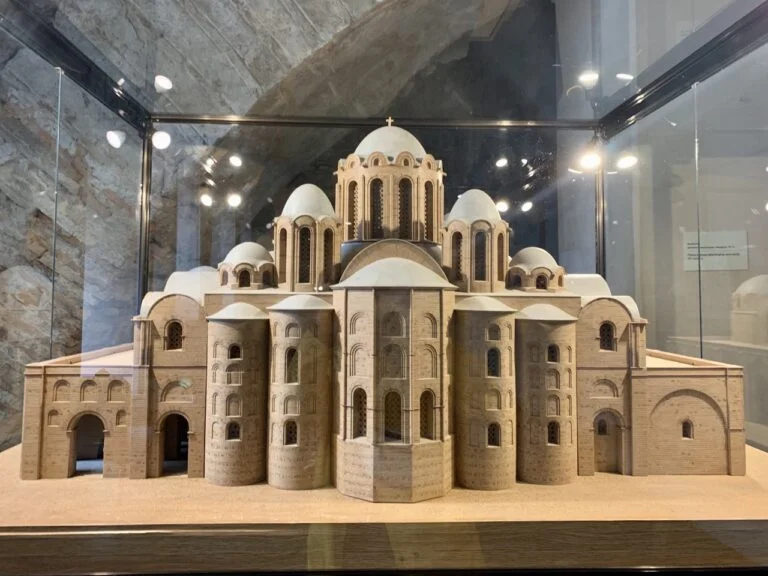
St. Sophia Cathedral in the eleventh century. Reconstruction
The name of the cathedral derives from the Greek word sophía – "wisdom." It was modeled by Byzantine masters after the St. Sophia's Cathedral in Constantinople. The construction began in the most significant period of Kyivan Rus, in the late 10th ti early 11th century. It was at this time, after receiving baptism from Byzantium in 988, that Kyivan Rus triumphantly entered the international arena and turned into one of the most powerful states in Europe. According to the architects' idea, the cathedral was supposed to confirm Christianity in Kyivan Rus and symbolize the "wisdom of Christian teaching". It was one of the largest buildings of
that time.
JOIN US ON TELEGRAM
Follow our coverage of the war on the @Kyivpost_official.
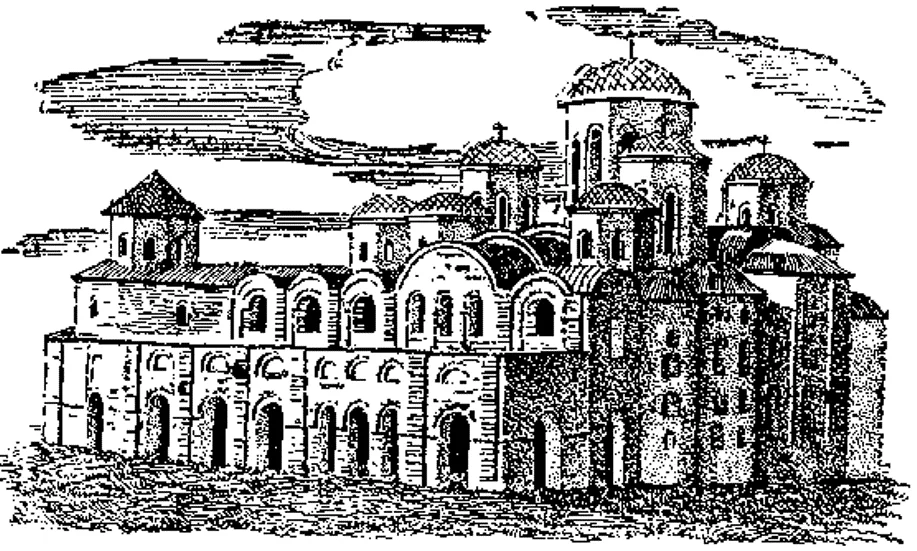
St. Sophia Cathedral graphic drawing 1037.
It was previously believed that Yaroslav the Wise constructed the cathedral between 1011-1018. However, new research indicates that the project was initiated by Volodymyr the Great from 980-1015. Unfortunately, Volodymyr passed away before the completion of the project, which was then continued by his oldest son, Yaroslav the Wise, and finished in 1018.
Yaroslav the Wise with his daughters, the founders of European dynasties, a painting on the wall of St. Sophia Cathedral.
Sophia of Kyiv's wall paintings span 3,000 square meters and contain over 7.5 thousand distinct drawings and writings left by both church officials and laypeople from the 11th to 18th centuries. Animals, birds, and mythical creatures are frequently depicted. Additionally, one can also find here the preserved record of Yaroslav's Wise death, the only existing depiction of the prince with his daughters, and the signature of Volodymyr Monomakh.
 Signature of Volodymyr Monomakh.
Signature of Volodymyr Monomakh.
The Cathedral is famous for its exceptional mosaics and frescoes, covering 260 square meters and consisting of 177 shades. The bell tower of the cathedral depicts scenes of games held in Constantinople in honor of Princess Olga. On the frescoes, one can see dancers, musicians, and jugglers, as well as chariot races. However, the frescoes created between the 17th and 19th centuries mainly focus on religious topics.
The St. Sophia Cathedral's primary altar features a stunning six-meter-tall depiction of Our Lady of the Sign, created from 2 million colored smalt pieces in varying shades. What's fascinating is that the image appears slightly different when viewed from different angles. The golden background behind Mother Mary is arranged in a manner that ensures it's always illuminated, regardless of where the light shines from.
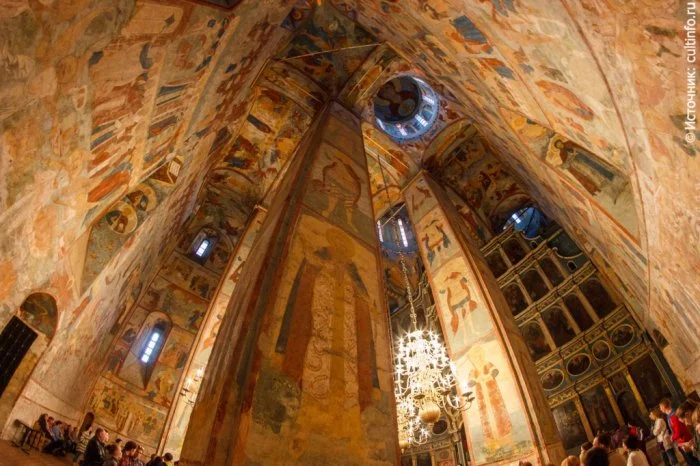
Interior paintings of the cathedral.
In 1037, Prince Yaroslav the Wise established the first library of Kyivan Rus in the basements of St. Sophia Cathedral. It boasted a collection of over 1,000 books and was tended to by monks. However, during an enemy raid, the monks hid the most valuable books in a secret underground passage, the location of which was kept a closely guarded secret and lost with the passing of the monks. Despite numerous attempts to locate the library during excavations, its whereabouts remain a mystery
to this day.
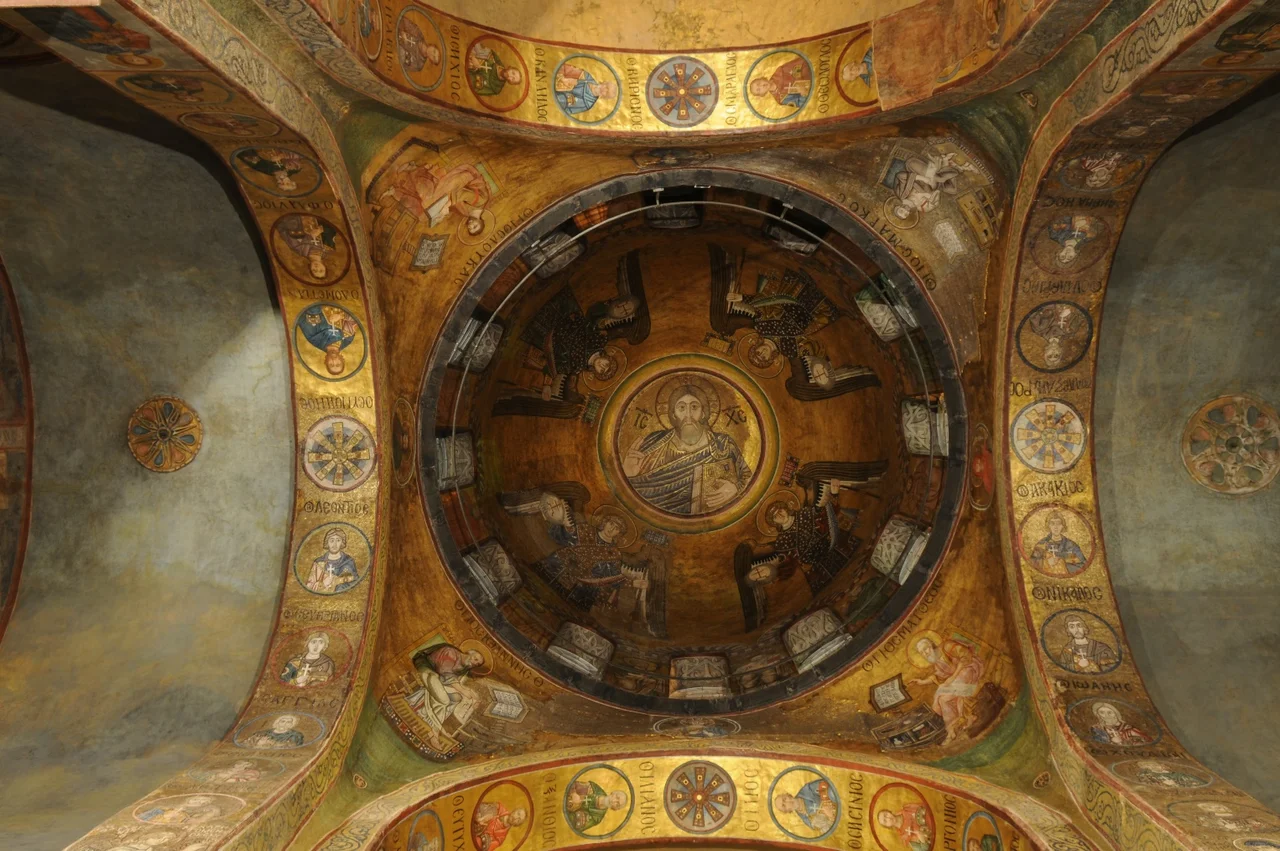
The design of the dome in the cathedral. A unique combination of frescoes and mosaics.
In the eastern part of the inner and outer northern galleries of St. Sophia Cathedral, in ancient times, there was a grand duke's tomb, where Yaroslav the Wise, Vsevolod Yaroslavich, Rostislav Vsevolodovych, Volodymyr Monomakh were laid to rest. Metropolitans Raphael (Zaborovsky), Arseniy (Mohylyansky), Havryil (Kremenetsky), Samuil (Myslavsky), Hierofey (of Malytsky), and others were also buried within the walls of Sofia.
The sarcophagus where the remains of Yaroslav the Wise and his wife Ingigerda were kept.
The cathedral also boasts a well-preserved white marble sarcophagus of Yaroslav the Wise that currently contains the remains of an unidentified woman who lived more than 900 years ago. Previously, the bones of two skeletons - a female and a male - were laid to rest in this sarcophagus that most likely belonged to Yaroslav the Wise and his wife. However, after the tomb chest was opened for research in 2008, it turned out that the prince's skeleton had mysteriously disappeared.
It is worth noting that in the tomb of the Metropolitan of Kyiv and Kyivan Rus Kyrylo II, who died in 1280 and was buried on the territory of the cathedral, the researchers found fragments of silk fabric with the image of the Our Lady of the Sign, It is considered the oldest fabric found in Eastern Slavic lands.
Throughout its history, Sofia of Kyiv has faced multiple devastating attacks, looting, reconstruction, and repairs. One of the most significant attacks occurred in 1169 when the prince of Suzdal, Andriy Bogolyubskyi, caused great damage to the cathedral during his attack on Kyiv. Then in 1180, a massive fire further damaged the temple. After Khan Batu's army conquered Kyiv in 1240, many buildings were destroyed, and St. Sophia's Cathedral was looted. The Crimean Tatars also inflicted damage during their raids. In the 16th century, the cathedral fell into disrepair after being captured by the Uniates.
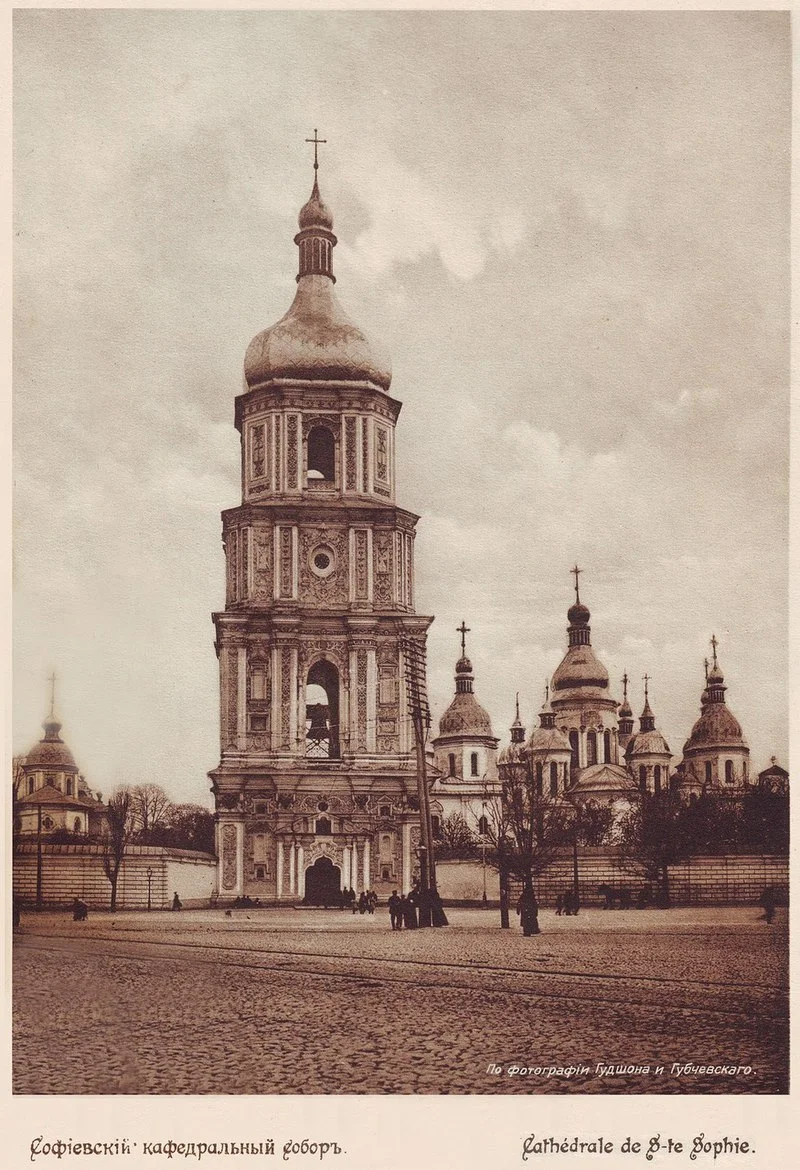
Photo from 1920-1930.
During the 17th century, a friary was established by Metropolitan Peter Mohyla at this location. Unfortunately, the wooden structures of the monastery were destroyed in a massive fire in 1697. It wasn't until the 17th and 18th centuries that stone buildings began to be constructed. The temple was restored thanks to the efforts of Hetman Ivan Mazepa.
In 1767, the long construction project was finally completed. During this time, many buildings were constructed, including a refectory, a bakery, the western gate (known as the Zaborovsky Gate), the metropolitan's house, the entrance tower, the monastery wall, the fraternal building, and the seminary. The main bell tower, which stands at a height of 76 meters, was built in the Cossack Baroque style. This tower still holds the bronze "Mazepa" bell, which features the hetman's coat of arms. There were another twenty bells in the ensemble, including a large bell weighing 13 tons and standing at 1.25 meters high, which was cast back in 1705 by order and at the expense of the hetman. Unfortunately, the other bells did not survive, but they were recast and installed in 2008 to commemorate the 1020th anniversary of the baptism of Kyivan Rus.
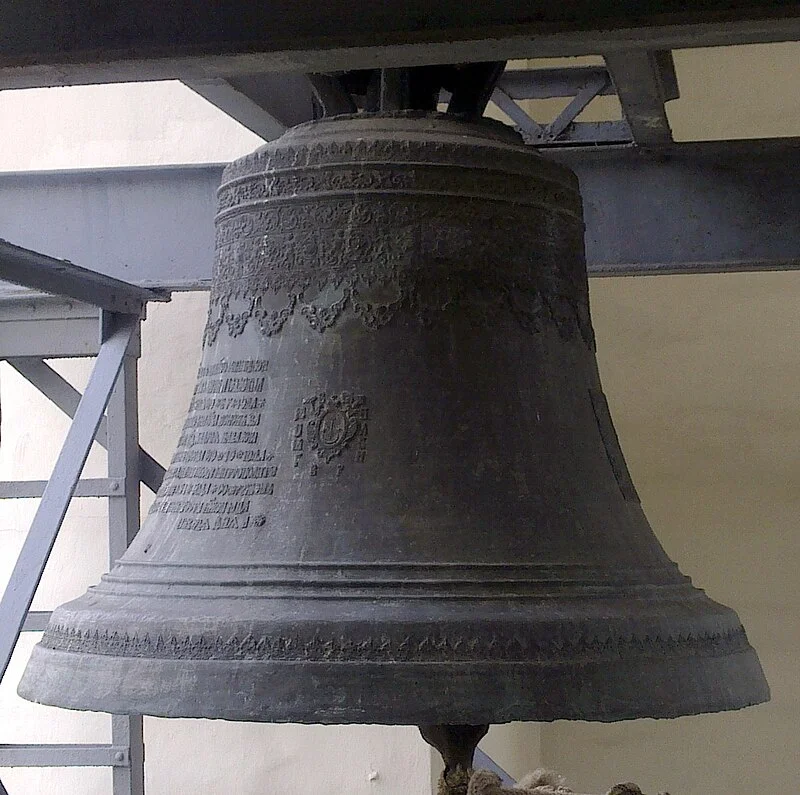
The bell with the Mazepa coat of arms dates from 1705.
Curiously enough, the Soviet authorities decided to demolish the cathedral in the 1930s. But it was saved thanks to the intervention of France, who remembered well that the wife of the French king Henry the First was the daughter of Yaroslav the Wise, Anna. Therefore, the Soviet authorities, fearing an international scandal, decided to turn the cathedral into a cultural preserve. Established in 1934, it was opened to visitors in May 1935. Since 1994, it has had the status of a National-level preserve, and in 2007 it was included in the list of 7 archaeological wonders of Ukraine.
During the Soviet times, the main iconostasis of St Sophia known as the Tsar's Gate was almost entirely given over to remelting. By some stroke of luck, 11 elements of the iconostasis were preserved. It wasn't until 2008 that the relic could be restored using preserved photos and drawings. The restoration of the main iconostasis
required 104 kg of silver.
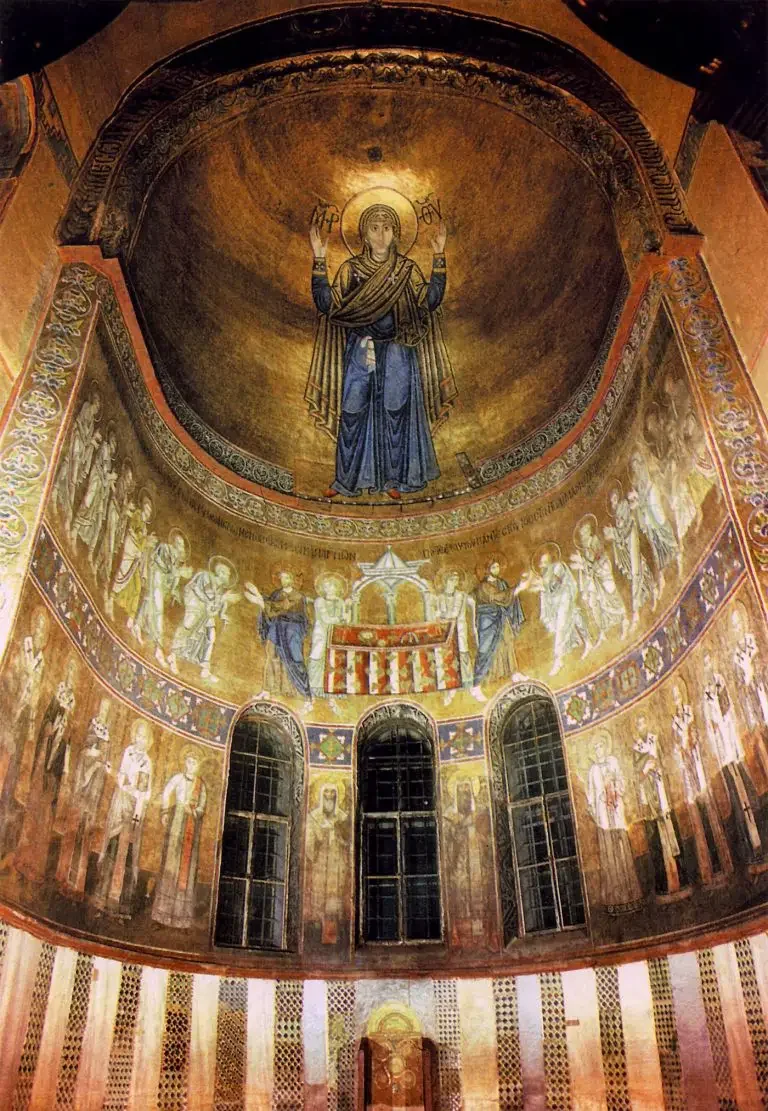
Oranta occupies an honorable place in the cathedral.
The main Kyiv landmark is known under several names: "Saint Sophia of Kyiv", "The Sophia's Cathedral", "The Cathedral of Saint Sophia - Wisdom of God", "Sophia's Museum", and "National Reserve Sophia of Kyiv". It is built of pink quartzite and granite, has a step pyramid silhouette, where 12 domes surround a large dome, is 41.7 meters long and 54.6 meters wide, and its structure reproduces
the medieval model of the universe.
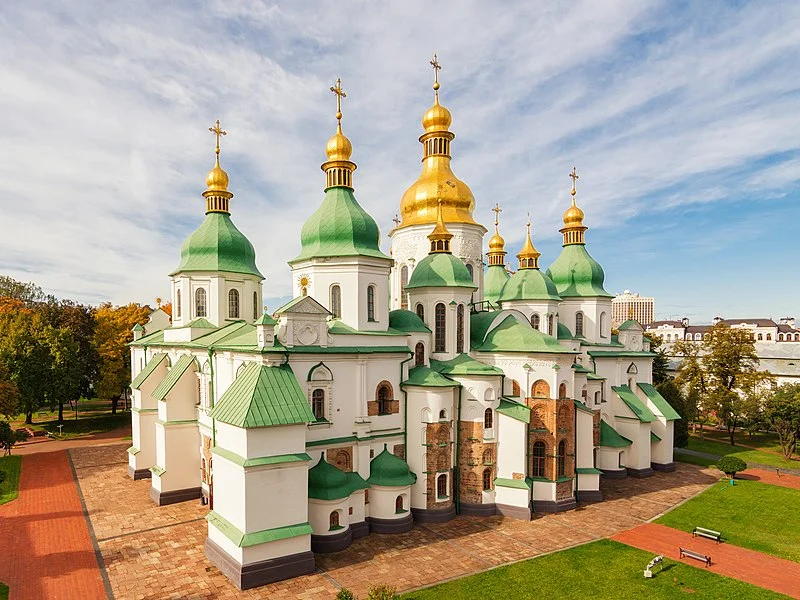
Visitors can enjoy the striking beauty of the cathedral and get closer to the history of their ancestors at the following address: Street. Volodymyrska, 24.
It is also possible to take a virtual tour of St. Sophia's Cathedral on the official website of the historical and cultural reserve "Saint Sophia of Kyiv."
You can also highlight the text and press Ctrl + Enter



